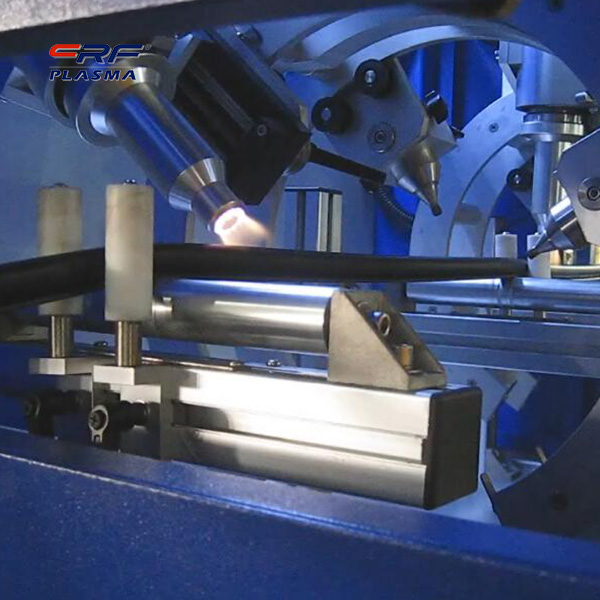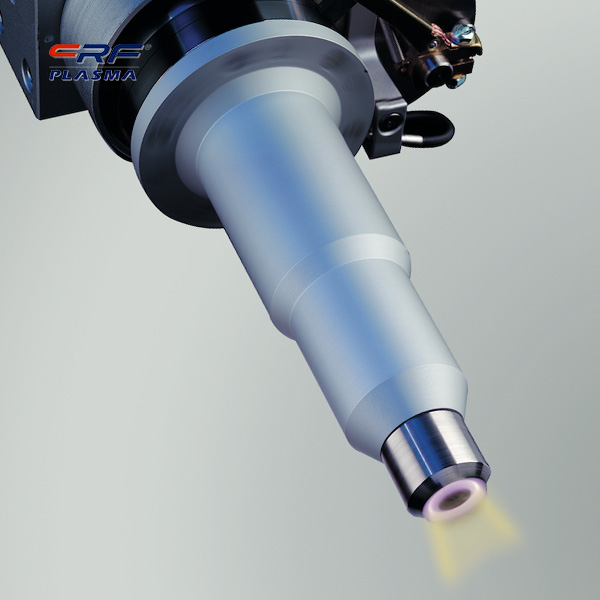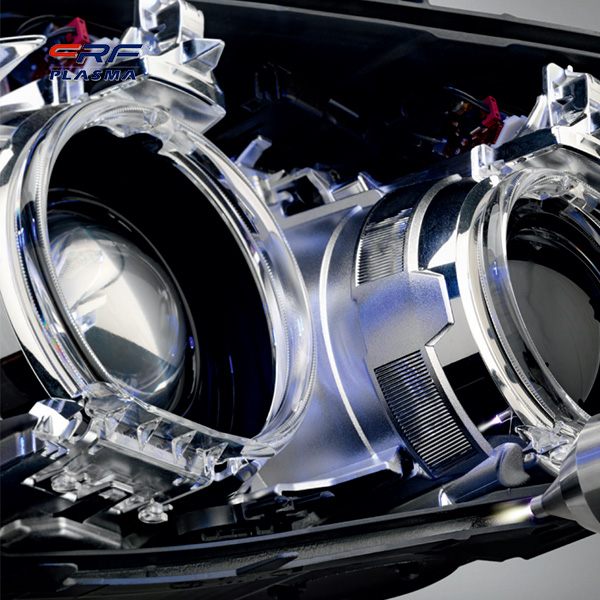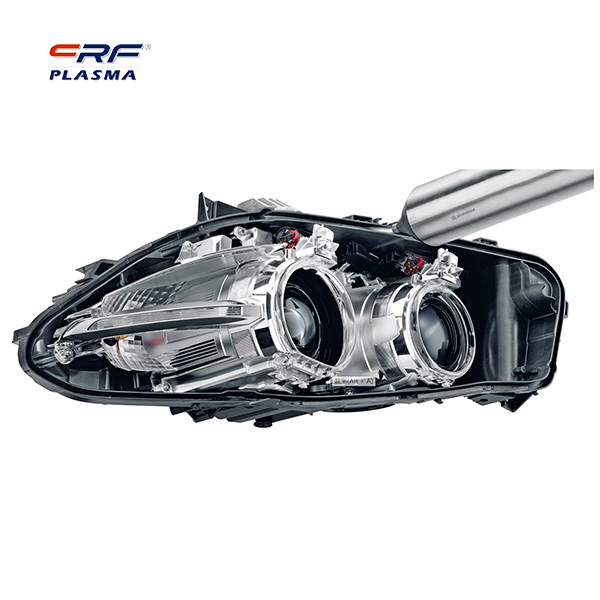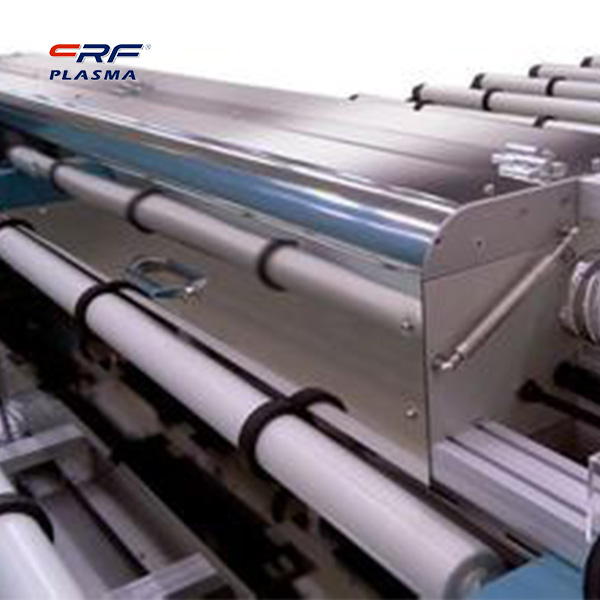
Welcome to Shenzhen Sing Fung Intelligent Manufacturing Co., Ltd.
E-mail:shaobo@sfi-crf.com
Plasma treatment can significantly improve the coating of polymer ceramic materials, metallic glasses or diamond-like material
- Categories:Industry News
- Author:Plasma cleaning machine-CRF plasma plasma equipment-plasma surface treatment machine manufacturer-chengfeng intelligent manufacturing
- Origin:
- Time of issue:2022-03-17
- Views:
(Summary description)Plasma treatment can significantly improve the coating of polymer ceramic materials, metallic glasses or diamond-like materials: Plasma processing offers the possibility to obtain innovative finishing functions on one or both sides of fabrics. A suitable plasma device configuration can be used to treat a single piece of clothing or shoe, creating a huge opportunity for branding and marketing. The big advantage of plasma treatment is that it provides an option for dry processing of textile materials. Solvent-based processing equipment uses organic solvents. The cost is much higher than water, and the equipment must be equipped with an efficient solvent recovery system to meet the necessary economic and environmental demands of the process. The processing technology using water as the medium will generate a large burden of wastewater pollution, resulting in an increase in the cost of wastewater treatment and disposal. Furthermore, removing moisture from textile materials is an energy-intensive process. Usually, the moisture in textile materials is removed as much as possible by mechanical dehydration, such as centrifugal dehydration, open-width calendering, and vacuum suction. The larger the capillary area in the textile structure and the heavier the grammage of the textile, the more difficult it is to mechanically remove moisture. The higher the proportion of hydrophilic fibers in the textile, the greater the residual moisture after dehydration, because such fibers have a higher fiber-saturation value. Plasma treatment is an air-dried textile material, which is an energy-efficient and economical choice compared to traditional water-based processing. At present, the main processing technology of textiles usually refers to wet processing technology. During the plasma treatment, the textiles are kept dry, and the costly heating and drying process can be omitted. In addition, no water is needed in the plasma treatment process, so there is no need to soften the water, and no waste water is generated. Plasma treatment therefore offers both economical and ecological advantages and offers dyeing, printing and finishing workers the opportunity to develop innovative processes to achieve novel finishing effects. The plasma process is considered to be a more environmentally friendly processing method than traditional wet processing of textiles. Plasma treatment is only carried out on the surface of the substrate, so physical or chemical modification is limited to the outermost layer of the fabric. Under normal processing conditions, most of the properties of the fabric were not affected. After the fiber surface is treated with plasma, the dirt on the fiber surface, such as natural impurities (wax), or added impurities (slurry) can be removed. The ablation/cleaning process can also modify the physical structure of the fiber surface through the erosion of the polymer material. In addition, the functionalization of the fiber surface layer with chemical groups also helps to improve the adhesion during coating/lamination treatment. The chemical groups on the fiber surface can act as reaction points for subsequent dyeing, printing or finishing. Plasma treatment can significantly improve the wear resistance of polymer, ceramic, metal, glass or diamond-like coatings in end-use applications. Plasma treatment can be used to achieve functional polymer coating on fibers, and the interior of the coating has a gradient along the thickness of the coating, so that different properties can be obtained. In composite materials, the interface of the matrix material is the key to determine the mechanical/chemical properties of the material. Plasma treatment improves composite properties such as interlaminar shear strength, fatigue resistance, delamination, and corrosion. Improvements in the interfacial reactivity of composites, including plasma-induced enhancement of surface adhesion, are achieved through microetching and mechanical interlocking, as well as changing surface chemistry. This performance enhancement is important for textile coating and lamination processing, as the adhesion of coating and laminating films to fabrics is critical for the product to achieve the highest end-use properties.
Plasma treatment can significantly improve the coating of polymer ceramic materials, metallic glasses or diamond-like material
(Summary description)Plasma treatment can significantly improve the coating of polymer ceramic materials, metallic glasses or diamond-like materials:
Plasma processing offers the possibility to obtain innovative finishing functions on one or both sides of fabrics. A suitable plasma device configuration can be used to treat a single piece of clothing or shoe, creating a huge opportunity for branding and marketing. The big advantage of plasma treatment is that it provides an option for dry processing of textile materials. Solvent-based processing equipment uses organic solvents. The cost is much higher than water, and the equipment must be equipped with an efficient solvent recovery system to meet the necessary economic and environmental demands of the process.
The processing technology using water as the medium will generate a large burden of wastewater pollution, resulting in an increase in the cost of wastewater treatment and disposal. Furthermore, removing moisture from textile materials is an energy-intensive process. Usually, the moisture in textile materials is removed as much as possible by mechanical dehydration, such as centrifugal dehydration, open-width calendering, and vacuum suction.
The larger the capillary area in the textile structure and the heavier the grammage of the textile, the more difficult it is to mechanically remove moisture. The higher the proportion of hydrophilic fibers in the textile, the greater the residual moisture after dehydration, because such fibers have a higher fiber-saturation value. Plasma treatment is an air-dried textile material, which is an energy-efficient and economical choice compared to traditional water-based processing. At present, the main processing technology of textiles usually refers to wet processing technology.
During the plasma treatment, the textiles are kept dry, and the costly heating and drying process can be omitted. In addition, no water is needed in the plasma treatment process, so there is no need to soften the water, and no waste water is generated. Plasma treatment therefore offers both economical and ecological advantages and offers dyeing, printing and finishing workers the opportunity to develop innovative processes to achieve novel finishing effects. The plasma process is considered to be a more environmentally friendly processing method than traditional wet processing of textiles.
Plasma treatment is only carried out on the surface of the substrate, so physical or chemical modification is limited to the outermost layer of the fabric. Under normal processing conditions, most of the properties of the fabric were not affected. After the fiber surface is treated with plasma, the dirt on the fiber surface, such as natural impurities (wax), or added impurities (slurry) can be removed. The ablation/cleaning process can also modify the physical structure of the fiber surface through the erosion of the polymer material.
In addition, the functionalization of the fiber surface layer with chemical groups also helps to improve the adhesion during coating/lamination treatment. The chemical groups on the fiber surface can act as reaction points for subsequent dyeing, printing or finishing. Plasma treatment can significantly improve the wear resistance of polymer, ceramic, metal, glass or diamond-like coatings in end-use applications. Plasma treatment can be used to achieve functional polymer coating on fibers, and the interior of the coating has a gradient along the thickness of the coating, so that different properties can be obtained.
In composite materials, the interface of the matrix material is the key to determine the mechanical/chemical properties of the material. Plasma treatment improves composite properties such as interlaminar shear strength, fatigue resistance, delamination, and corrosion. Improvements in the interfacial reactivity of composites, including plasma-induced enhancement of surface adhesion, are achieved through microetching and mechanical interlocking, as well as changing surface chemistry. This performance enhancement is important for textile coating and lamination processing, as the adhesion of coating and laminating films to fabrics is critical for the product to achieve the highest end-use properties.
- Categories:Industry News
- Author:Plasma cleaning machine-CRF plasma plasma equipment-plasma surface treatment machine manufacturer-chengfeng intelligent manufacturing
- Origin:
- Time of issue:2022-03-17 20:42
- Views:
Plasma treatment can significantly improve the coating of polymer ceramic materials, metallic glasses or diamond-like materials:
Plasma processing offers the possibility to obtain innovative finishing functions on one or both sides of fabrics. A suitable plasma device configuration can be used to treat a single piece of clothing or shoe, creating a huge opportunity for branding and marketing. The big advantage of plasma treatment is that it provides an option for dry processing of textile materials. Solvent-based processing equipment uses organic solvents. The cost is much higher than water, and the equipment must be equipped with an efficient solvent recovery system to meet the necessary economic and environmental demands of the process.
The processing technology using water as the medium will generate a large burden of wastewater pollution, resulting in an increase in the cost of wastewater treatment and disposal. Furthermore, removing moisture from textile materials is an energy-intensive process. Usually, the moisture in textile materials is removed as much as possible by mechanical dehydration, such as centrifugal dehydration, open-width calendering, and vacuum suction.
The larger the capillary area in the textile structure and the heavier the grammage of the textile, the more difficult it is to mechanically remove moisture. The higher the proportion of hydrophilic fibers in the textile, the greater the residual moisture after dehydration, because such fibers have a higher fiber-saturation value. Plasma treatment is an air-dried textile material, which is an energy-efficient and economical choice compared to traditional water-based processing. At present, the main processing technology of textiles usually refers to wet processing technology.
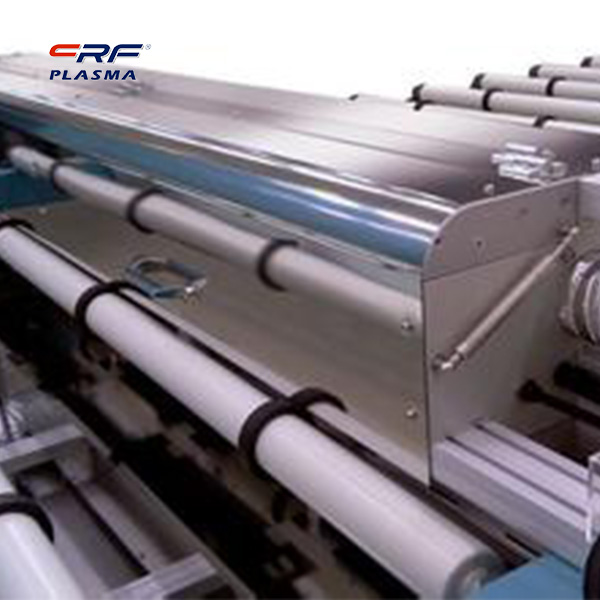 During the plasma treatment, the textiles are kept dry, and the costly heating and drying process can be omitted. In addition, no water is needed in the plasma treatment process, so there is no need to soften the water, and no waste water is generated. Plasma treatment therefore offers both economical and ecological advantages and offers dyeing, printing and finishing workers the opportunity to develop innovative processes to achieve novel finishing effects. The plasma process is considered to be a more environmentally friendly processing method than traditional wet processing of textiles.
During the plasma treatment, the textiles are kept dry, and the costly heating and drying process can be omitted. In addition, no water is needed in the plasma treatment process, so there is no need to soften the water, and no waste water is generated. Plasma treatment therefore offers both economical and ecological advantages and offers dyeing, printing and finishing workers the opportunity to develop innovative processes to achieve novel finishing effects. The plasma process is considered to be a more environmentally friendly processing method than traditional wet processing of textiles.
Plasma treatment is only carried out on the surface of the substrate, so physical or chemical modification is limited to the outermost layer of the fabric. Under normal processing conditions, most of the properties of the fabric were not affected. After the fiber surface is treated with plasma, the dirt on the fiber surface, such as natural impurities (wax), or added impurities (slurry) can be removed. The ablation/cleaning process can also modify the physical structure of the fiber surface through the erosion of the polymer material.
In addition, the functionalization of the fiber surface layer with chemical groups also helps to improve the adhesion during coating/lamination treatment. The chemical groups on the fiber surface can act as reaction points for subsequent dyeing, printing or finishing. Plasma treatment can significantly improve the wear resistance of polymer, ceramic, metal, glass or diamond-like coatings in end-use applications. Plasma treatment can be used to achieve functional polymer coating on fibers, and the interior of the coating has a gradient along the thickness of the coating, so that different properties can be obtained.
In composite materials, the interface of the matrix material is the key to determine the mechanical/chemical properties of the material. Plasma treatment improves composite properties such as interlaminar shear strength, fatigue resistance, delamination, and corrosion. Improvements in the interfacial reactivity of composites, including plasma-induced enhancement of surface adhesion, are achieved through microetching and mechanical interlocking, as well as changing surface chemistry. This performance enhancement is important for textile coating and lamination processing, as the adhesion of coating and laminating films to fabrics is critical for the product to achieve the highest end-use properties.
Scan the QR code to read on your phone

TEL:0755-3367 3020 / 0755-3367 3019

E-mail:sales-sfi@sfi-crf.com

ADD:Mabao Industrial Zone, Huangpu, Baoan District, Shenzhen





